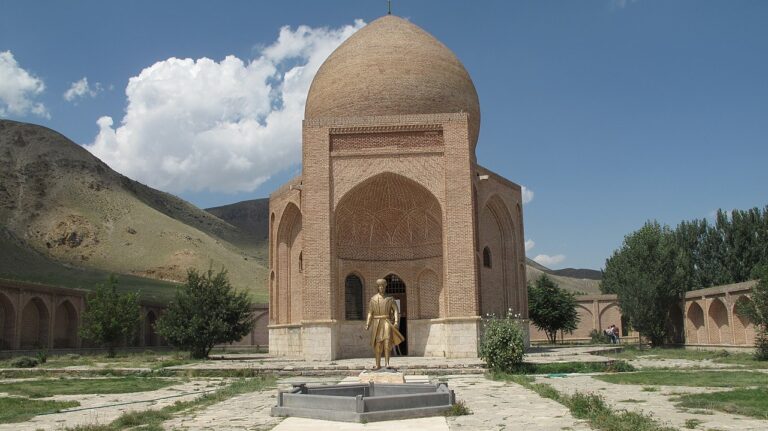Isfahan, a city in the center of Iran, with a climate that should usually be dry and hot, but many parks, the mighty river Zayande Rood, and many bridges on this river will excite you. Most of these bridges are historical, around four hundred years old, made of clay and brick, with old facilities, but strong and stable. Like most of the historical monuments of this city, these bridges were built in the Safavid period.
More About the City
Isfahan is the capital of Isfahan province and the third-largest city in Iran. It is located on the north bank of the Zayandeh River, about 340 km south of Tehran. Isfahan has a long and rich history, dating back to the ancient times. It was once the capital of Persia under the Safavid dynasty, which ruled from 1501 to 1736. During this period, Isfahan became a center of art, culture, and architecture, and was famous as “half of the world” for its splendor and magnificence.
What to see
Isfahan is famous for its Persian-Islamic architecture, which reflects the diverse influences of different eras and dynasties. Some of the most notable landmarks in Isfahan are:
Naqsh-e Jahan
- The Naqsh-e Jahan Square, which is one of the largest and most beautiful squares in the world. Shah Abbas I ordered to build this square in the 17th century as the royal center of his empire. The square has by four magnificent buildings: the Masjed-e Emam (Imam Mosque), which is a masterpiece of tile work and calligraphy; the Masjed-e Sheikh Lotfollah (Sheikh Lotfollah Mosque), which is a smaller but exquisite mosque with a stunning dome; the Ali Qapu Palace, which is a six-story palace with a wooden balcony and a music room; and the Qeysarie Gate, which is the entrance to the Grand Bazaar of Isfahan, one of the oldest and largest bazaars in the Middle East. Visit Naghsh-e Jahan with me here in this video.
Chehel Sotoun
- The Chehel Sotoun Palace, which is a pavilion in a large garden that was for receptions and ceremonies by the Safavid kings. The palace has 20 wooden columns that reflect in a pool, creating the illusion of 40 columns (chehel sotoun means “forty columns” in Persian). The palace also has a hall with stunning frescoes and paintings that depict historical scenes and legends.
Khajou Bridge
- The Khaju Bridge, which is a bridge over the Zayandeh River. The bridge has two levels of arches and a central pavilion. The bridge also serves as a dam and has sluice gates that regulate the water flow. The bridge is a popular spot for locals and tourists to enjoy the view of the river and listen to the singing of nightingales.
Vank Cathedral
- The Vank Cathedral, which is a church that was built by Armenian Christians who migrated to Isfahan after the Ottoman-Safavid War in the 17th century. The cathedral has a mixture of Persian and Armenian styles, with a domed sanctuary and a bell tower. The interior of the cathedral is decorated with frescoes and paintings that depict biblical scenes and martyrs. The cathedral also has a museum that displays manuscripts, books, and relics related to Armenian culture and history.
More about Isfahan
Isfahan is a city that offers a unique experience for visitors who want to explore its history, culture, beauty, and charm. Isfahan is a city that will captivate you with its wonders.
People in this area speak Persian language (or Farsi). But with an accent which is speciall to this area. When a person who we don’t know speaks Farsi with this accent, we simply can recognize their originality.
In this video, we walk under the Khaju Bridge and on the Si-o-Se Bridge. Then together we try one of the famous traditional dishes of Isfahan called Beryuni for lunch.
Walk with me, see the people and beautiful bridges and delicious food, and learn Persian language and beyond.
To visit Iranian people and learn about their culture and nature follow THIS LINK.
To learn Persian grammar, here you can find lessons on Persian Grammar.
Are you interested in learning Persian with music, HERE is where you can find many slow Persian songs with their lyrics.
Practice Dubbing the characters in Persian series HERE.
Listen to famous speeches from Iranian political figures, and learn about their mindset and a little bit of history through their talk HERE.
Listen to Persian podcasts in simple Persian HERE

